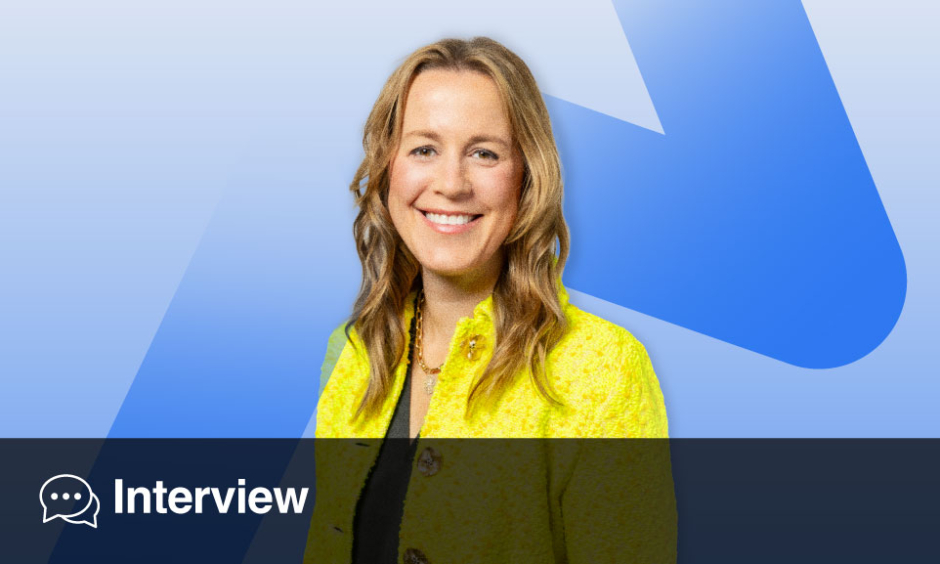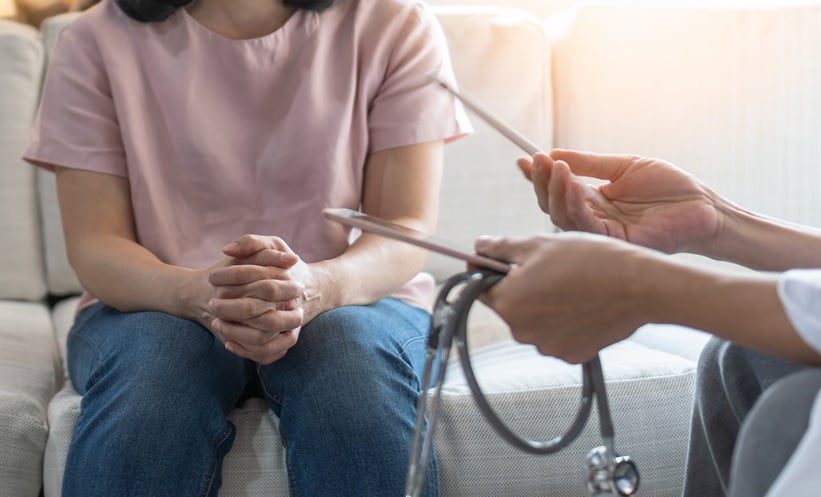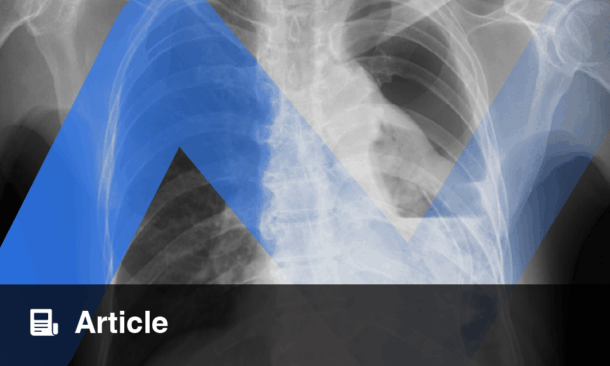Erika Hamilton | Scientific Chair for the Annual Meeting 2025 American Society of Clinical Oncology (ASCO). Director of Breast Cancer Research Program and Chair, Executive Breast Committee, Sarah Cannon Research Institute, Nashville, Tennessee, USA.
Citation: Oncol AMJ. 2025;2[1]:87-91. https://doi.org/10.33590/oncolamj/WHLQ6355
![]()
Your commitment to oncology extends beyond practice, with roles such as Chair of the Scientific Program Committee for the 2025 American Society of Clinical Oncology (ASCO) Annual Meeting, as a member of the Nominating Committee, and in other societies. How important is it for oncologists to get involved in these associations, and what can they do to help drive positive change within the specialty?
As practicing oncologists, we can get bogged down in our individual practices and thus have trouble seeing the bigger picture in some ways, not to mention time constraints. I have been involved with ASCO for quite a number of years, and it has been really rewarding. I think a lot of people have recognized, in 2025, that we need to be more vocal about how healthcare is delivered and some of the policy changes that affect our specialty. ASCO is involved in policy and advocacy, including how our patients access medications. Research funding is another big topic in 2025, and ASCO provides a space for discussion on this critical topic. I think most people, when they hear the word ASCO, think of the Annual Meeting, but ASCO is so much more than that (although that is certainly the event that most people show up for). ASCO also has a lot of other offerings: online seminars about professional development and a variety of different strategies, mentor-mentee relationships, or getting advice about certain parts of your practice or practice administration that you might not have experience in. ASCO also serves as an important publishing society for the Journal of Clinical Oncology (JCO), which now also includes JCO Global Oncology, JCO Precision Oncology, and JCO Oncology Practice. And then finally, there are also online forums. I see a lot of ideas being exchanged back and forth: “We’re having an issue with ‘x’ in our practice. What have you done?” and crowdsourcing some areas for improvement across the industry.
How were you able to contribute to ASCO’s mission through your position as Scientific Program Committee Chair?
As we all know, the ASCO President changes every year. This year, it was Robin Zon, [Michiana Hematology Oncology, Mishawaka, Indiana, USA], who also is in community practice. The ASCO President picks a Chair for the Education Program Committee as well as a Scientific Program Committee Chair, Cardi Smith, [Memorial Sloan Kettering Cancer Center, New York], was the Education Program Committee Chair, and together we are responsible for setting the agenda and shaping the Annual Meeting from sessions such as the oral presentations, rapid orals, and posters, to planning special Clinical Science Symposium (CSS) sessions. We like for these to represent the full landscape of innovation, not just focus on traditional tracks such as breast and gastrointestinal, but look holistically across oncology. For example, our special CSS sessions this year were on cancer detection, specifically, early cancer detection, such as blood-based assays, new data, and ultimately, looking at how we might integrate those into practice. A second session was on gene therapy, beyond liquid tumors or conditions such as sickle cell disease, but how it is branching into solid tumors as well. Also, there was a session on antibody drug conjugates (ADC). ADCs have been a hot topic in oncology across multiple tumor types, but really talking about these new targets, not the existing targets, and what is coming in the pipeline. It is rewarding to serve in a role that shapes the character of the Annual Meeting. We really tried to focus on and highlight some of our patient advocates this year, making sure they had a seat at the table and that at the end of our sessions, we brought it back to: “What’s practice-changing? What did we learn? And how are we going to drive that knowledge to action?” Which was Zon’s theme for Monday morning: How is this going to impact how we deliver care?
What a task! How did you start planning?
It is similar to some of the other roles I have served in with ASCO, where you have pre-year and post-year responsibilities. We already know who the Scientific and Education Chairs are next year, but also for the year after that. The year before you are the Chair, you actually do everything with the existing Chairs. You go in person to the Education Program Committee Meeting in Alexandria [Virginia, USA], at ASCO headquarters, you attend the Scientific Program Committee Meeting, and you use the pre-year term time to shadow your predecessor so that you know what to expect and can hit the ground running in your term. It provides valuable overlap. For example, we do not want to have the same sessions two years in a row, so this structure provides more of a panel perspective than just one person doing it all. And then when you are in your past year term, like me now, I will attend all the scientific meetings as previous Past Chair. So, there is always a panel of the three leaders in various roles on that continuum that help each other out.
What do you feel are the greatest opportunities and challenges facing ASCO today?
I think we could spend an hour talking about all the opportunities and challenges right now! I think the challenges that stand out are disparities and access to clinical trials. We have a disproportionate situation in the United States where almost everyone with pediatric cancer participates in a clinical trial, and the vast minority of adults with cancer participate in a clinical trial. Clinical trials are how we advance science. Oncology workforce shortages and burnout are a problem. It is not an easy specialty because a lot of patients are sick, and ultimately, some of those patients pass away. But we are also challenged because of the climate right now, and people’s belief in science and healthcare, and what advice they should follow. A lot of information online that is not the best has gained a lot of traction. The funding environment is also a big challenge in 2025. All of this makes it feel like healthcare and oncology have a little bit more pressure than we normally have.
What were your standout moments from this year’s Annual Meeting?
Some of the things that I really enjoyed at ASCO this year were the opening session where Zon talked about her theme. I am probably a little bit biased because I spent a year trying to deliver this theme! But I thought she did a fantastic job. Some of the speakers in that session were fantastic.
At ASCO 2025 there was a new technology, an AI platform rolled out in conjunction with Google. It is a way to get updated guideline information in one place, with accurate references, and more. It is a resource you can trust. I think that is important in this day and age, in oncology, and especially for general oncologists who have to keep up with all this emerging data. If you think about all the new data at ASCO, and you are a general oncologist that treats everything, it is really hard to keep up with. So, I was excited about that new technology. The other thing that I really loved about ASCO is that there was something for everyone, from basic science to clinical trials to more policy and education sessions. We tried to put a big emphasis on patients. We had more patients showing up in important sessions like the CSS, and all three had a patient who was speaking for the first time. We had a bonus discussion with Mark Lewis [Intermountain Healthcare, Murray, Utah, USA] who straddles the line between physician oncologist that speaks the lingo but also a patient that has been down this journey. I thought he delivered a great talk. The plenary is the “biggest deal research” that we see. So, how would you talk to a patient about this? How would you explain to them whether they are interested in this new therapy or not?
What were the most exciting updates that you were a part of at ASCO 2025? How will they impact patient outcomes?
I got to chair the Plenary, which was fun. We certainly had no shortage of questions coming in on our iPads up there! It was across multiple diseases, which was exciting, and a couple of abstracts focused on the benefit of immunotherapy, even in earlier settings. In breast, we saw camizestrant (AstraZeneca, Cambridge, UK), really kind of a proof of principle, getting to be a paradigm shift where we may be looking at the emergence of mutations and switching therapy. Although, I am not sure camizestrant is quite ready for prime time in terms of the data that we have on progression-free survival (PFS)-2.
We also saw an abstract about PTG-300 [Protagonist Therapeutics, Newark, California, USA] for polycythemia vera. This is not necessarily a disease that we are measuring in terms of PFS or overall survival immediately, but one that we are measuring tolerability in for these patients, and what their life may look like over the two decades that they have polycythemia vera and are needing a phlebotomy.
I presented vepdegestrant [Arvinas, New Haven, Connecticut, USA; Pfizer, New York, USA] in the oral metastatic breast session. This is a novel drug, a PROTAC™, or “proteolysis-targeting chimera,” so a different version of an estrogen receptor (ER) degrader. The trial enrolled patients with ER-positive. HER2-negative metastatic breast cancer that had already progressed on endocrine therapy and a CDK4/6 inhibitor. They were randomized to vepdegestrant, 200 mg orally once daily, continuously, or fulvestrant, which is our intramuscular selective estrogen receptor degraders (SERD) at 500 mg on Days 1 and 15, and then on Day 1 of each subsequent cycle. Our primary endpoint was PFS among those patients that had an ESR1 mutation, and our statistical design was that if that was positive, we would go on to test PFS in all comers. This trial did meet its primary endpoint, and we were able to publish it. Simultaneously, it lengthened PFS from 2.1 months with fulvestrant to 5.0 months with that vepdegestrant. When we went on to look at PFS in the all-comer population, this was not different. The benefit was really restricted to those that had ESR1 mutations. It was also quite compelling when we looked at some of our key secondary endpoints. In those patients that had ESR1 mutations, clinical benefit rate was essentially doubled, 22% up to about 45%, and the overall response rate was more than quadrupled, about 4% up to about 18.5%. That was compelling data. I was excited about the tolerability of this. I like to look at discontinuations and dose reductions as a measure of how well somebody is really tolerating a drug. We saw that discontinuations were 3%, dose reductions were 2%, and the most common side effects, for example, fatigue was the most common, but that was only 27% of patients at any grade. Said a different way, 75% of patients reported no fatigue, and they had metastatic cancer. I was encouraged to not see a gastrointestinal signal there that can be a little bit plaguing for some patients on the oral selective estrogen receptor degraders.
I was also a part of presenting the Emi-Le data. This is a novel ADC. It was presented in a mini oral in Developmental Therapeutics. This is a B7-H4-targeting ADC, so a novel target. And then the payload is also novel. It is an auristatin-based payload, but specifically, it is not an auristatin that we have seen before. It is not a monomethyl auristatin, it is not a monomethyl auristatin F, it is really a novel payload. This was a Phase I dose escalation. We looked at multiple levels, multiple tumor types, breast, triple negative, hormone receptor positive, ovarian, endometrial, adenoid cystic carcinoma. What was compelling to me were the patients with triple-negative breast cancer: 93% of them had already seen a topoisomerase-1 inhibitor ADC. About 85% had received sacituzumab govitecan, a third had received trastuzumab deruxtecan, and a quarter had received both. Our response rate was 23%, so I think as we start thinking about ADC sequencing and resistance, this idea of both a novel target and a novel payload is really going to be quite important.
That sounds incredibly exciting. What are the next steps for the VERITAC-2 trial?
The dose escalation is complete. We are currently in a dose expansion in triple-negative breast cancer. We are looking at that upper end of the intermediate dose range, so about 67 mg/m² every 4 weeks, so patient friendly. Then there is a second dosing schedule. We are also looking at where it is a loading dose on Day 1 and 8, in the range of 40 mg/m², and then 80 mg/m² every 4 weeks after that. That trial is enrolling patients with triple-negative breast cancer right now. We are certainly excited about some of these other tumor types, for example, in adenoid cystic carcinoma, which is a rare cancer, five of the nine patients treated still remain on therapy, our PFS was not even reached, and our response rate was 55%.
There is a high volume of content on breast cancer shared at the Annual Meeting every year. What is your advice to attendees to get the most out of the meeting?
I think going to ASCO kind of feels like drinking from a fire hose, but there are ways to make it more digestible. I find the ASCO online interface friendly for searching for things, whether I am searching for an oral, a rapid oral, or I am looking for a track, like breast cancer. I typically start my meeting by sorting for the breast cancer track, building a scaffold of everything that I want to attend there. You can build this online on ASCO’s website. Then branching out, I know I want to go to plenary, what are the special CSS, what are the education sessions I want to attend? It also allows me to spot the things that I know I am not going to be able to attend because there is something else going on, and going back and watching that after as these are saved online. As an attendee or online registrant, it is possible to be in two places, just not at once.
As Director of Breast Cancer Research at Sarah Cannon Research Institute, what recent clinical trials are you most excited about at your organization?
That is a tough question! We have a lot of clinical trials, and I am excited about a lot of them. Some of the hot areas right now are with ADCs. We have seen just fantastic data from trastuzumab deruxtecan, sacituzumab govitecan, and datopotamab deruxtecan in breast cancer, and there are many novel ADCs coming. The advantage is being able to deliver cytotoxic chemotherapy, and sometimes that chemotherapy is a little stronger than what we could deliver naked or not targeted, but targeted to the cancer cell and hopefully sparing a lot of the normal side effects of chemotherapy. We are seeing great activity in our clinical trials right now with these new targets and new payloads that are coming. So, I’m excited about that.
I remain excited about novel endocrine backbones. For the past couple of decades, the trend really has been about targeted agents, CDK4/6 inhibitors, PI3K inhibitors, PARP inhibitors, immunotherapies, but it has been less about new endocrine backbones. We are still using tamoxifen, aromatase inhibitors, and fulvestrant. We know that fulvestrant after CDK4/6 inhibition does not offer much benefit, about two months in PFS as a single agent. Now we are seeing encouraging data from the oral SERDs and agents like vepdegestrant, the PROTACs, and other classes like both the complete ER antagonist and sarcoendoplasmic reticulum calcium ATPase inhibitors.
We are getting into some of the combinations with these novel endocrine backbones, combinations with oral SERDs, for example, with some of these other targeted agents, which I think are exciting. Then moving these new agents up earlier. There are quite a few trials that are accruing in the curative space, in the adjuvant setting, either for higher-risk patients that are initially starting their endocrine therapy, maybe getting an oral SERD instead of an aromatase inhibitor, with or without CDK. Or for those patients who are 2–5 years into their endocrine therapy and doing a switch strategy. Those clinical trials are really a no-brainer from the data that we have seen in the metastatic setting, and in a lot of cases, I think that they are tolerated better than some of our current, available, and different therapies as well.








